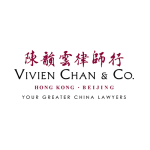China's resilient domestic market remains significant for multinational corporations. Chinese consumers commonly refer to foreign brands and their products using Chinese names, underscoring the critical significance for foreign brands to strategise and register appropriate Chinese language marks. This proactive approach is essential for securing and preserving their competitive edge in the dynamic Chinese market and guarding against infringement and any potential misuse of the brand and product names.
This article explains the importance of devising and registering Chinese language marks, and different ways to devise them, and shares Vivien Chan & Co’s prosecution tips and the firm’s successful cases.
Why devising and registering Chinese language marks is crucial
Marketing efficiency
The official language of China is Chinese, with the official spoken language being Mandarin. Given the prevalent use of Chinese among local consumers, it is common for the general public to refer to foreign brands and their products using Chinese names.
In instances where foreign brands have not established official Chinese names, local distributors, retailers, media, and consumers may independently devise their own Chinese renditions. Furthermore, the presence of numerous Chinese dialects may give rise to regional variations in the Chinese names, potentially diluting the brand's identity and undermining dedicated marketing endeavours.
By adopting official brand names and product names, brand owners can retain control over the choices of names and allow effective brand communication.
Protection against bad-faith registrations and malicious infringement claims
China operates under a first-to-file system. It is a prevalent practice for opportunistic individuals, known as squatters, to pre-emptively file trademark applications for the Chinese versions of foreign brands, including those commonly used by the Chinese public. These bad-faith registrations may not only disrupt the business of foreign brand owners but also impede their own applications for the desired Chinese marks.
In recent years, some professional squatters have even filed malicious infringement complaints and lawsuits against brand owners and recorded their bad-faith registrations with China’s General Administration of Customs, severely interrupting the sale, importation, and exportation of the brand owners’ products.
Protection against counterfeiting
The counterfeit goods industry is a multi-trillion-dollar market. The sale of counterfeit goods can cause severe financial repercussions and reputational damage to brand owners, both within China and on a global scale. Merely securing trademark registration for a foreign brand name but not the Chinese equivalent brand name is far from satisfactory, as a registration for a foreign brand name generally does not preclude others from using the Chinese equivalent name. From Viven Chan & Co’s experience in dealing with e-commerce platform operators and local administrations for market regulation, without a registered Chinese trademark, they may refuse to accept complaints concerning infringing listings being promoted and sold under a Chinese mark.
Consequently, it becomes imperative for foreign brand owners to proactively devise and register their Chinese brand names in China as a pivotal measure in safeguarding their brand's integrity and mitigating the risks associated with squatting and counterfeiting.
How to devise a Chinese language mark
Brand owners often seek Vivien Chan & Co’s suggestions on the choice of Chinese brand names. The firm generally recommends adopting Chinese names fulfilling the following criteria for effective brand communication:
Easy to remember – avoid adopting an excessively lengthy name. An optimal mark length should generally range between two and four characters.
Easy to pronounce – the different dialects spoken in China should be borne in mind.
No negative connotation – public perceptions and the China National Intellectual Property Administration’s (CNIPA’s) perceptions equally matter. As will be discussed below, objections based on negative societal influence and deceptiveness are now readily raised by the CNIPA.
Some common approaches for devising a Chinese language mark are as follows:
Approach | Description | Examples |
Transliteration | This is the most common way of developing a Chinese brand name. Transliteration can preserve the pronunciation of a foreign mark. However, the Chinese mark may be meaningless in Chinese and hard to remember. | Adidas – 阿迪达斯 (pronounced as “a-di-da-si”) Gucci –古驰 (pronounced as “gu-ci”) |
Translation | Brand owners may adopt the direct Chinese meaning of a foreign mark if it has a Chinese-equivalent meaning. The downside of this approach is that the Chinese mark may not be phonetically similar to the foreign counterpart. | Apple – 苹果 (pronounced as “ping-guo”) Playboy – 花花公子(pronounced as “hua-hua-gong-zi”) |
Combination of transliteration and translation | This is a combination of the aforementioned approaches. It helps in devising brand names that are easy to remember and in fostering an association with foreign brand names. | Starbucks – 星巴克 (pronounced as “xing-ba-ke”, with the first character meaning “star”) Mickey Mouse – 米老鼠 (pronounced as “mi-lao-shu”, with the last two characters meaning “mouse”) |
Combination of transliteration and meaning | The transliteration process may be enhanced by incorporating positively connotated words into the Chinese brand name. This approach ensures that the Chinese name not only phonetically resembles its foreign counterpart but also aligns with the brand's image and has an appealing sound to Chinese consumers. | Coca-Cola – 可口可乐 (pronounced as “ke-kou-ke-le”, with “可口” meaning “tasty” and “可乐” meaning “entertaining/happiness”) Ikea - 宜家 (pronounced as “yi-jia”, meaning “suitable for home”) |
Creative translation | Chinese brand names may also be chosen that exhibit partial, or even no, similarity to their foreign counterparts. These names can take the form of abbreviations or significantly modified transliterations, carrying connotations that align with the desired brand image. This method is suitable for long foreign brand names and brand names that are difficult to be transliterated. | Heineken – 喜力 (pronounced “xi-li”, meaning “happiness” and “strength”) Schweppes – 玉泉 (pronounced “yu-quan”, meaning “jade spring”) |
It is worthwhile to seek advice from trademark attorneys with experience and knowledge in different Chinese spoken dialects to devise an apt Chinese brand name that aligns with the brand image and positioning of a brand, and that is easy for consumers to remember and pronounce.
Avoiding common objections from the CNIPA
From Vivien Chan & Co’s experience, there are two grounds of refusal commonly encountered by brand owners.
Deceptiveness
Some brand owners, especially those in the pharmaceutical and health product industries, prefer to adopt Chinese marks whose appearance and pronunciations are similar to those of Chinese descriptors of the essential features of their products. Brand owners should watch out for Article 10 of the Chinese Trademark Law, which sets forth various prohibitions on the usage of signs as trademarks. Among others, it prohibits the use of signs that may mislead consumers concerning product characteristics.
An example of Chinese signs which may be caught under Article 10 would be “前列线” when used on the retail and distribution of pharmaceutical goods. “前列” means “forefront”, and “线” means “line”. While it is not descriptive of the characteristics of pharmaceutical goods, it shows significant resemblance to, and has the same pronunciation as, “前列腺”, which mean “prostate”. As there is no limitation to the scope of pharmaceutical goods, they may include products for the treatment of health issues other than prostate problems. Consumers may thus be misled into thinking that all pharmaceutical goods sold or distributed by the brand owner are for the treatment of prostate concerns.
Furthermore, Article 10 also prohibits signs that may exert an adverse social influence. Marks such as “土豪” (which is a buzzword describing rich people with low taste or education) and “裸步” (which means “walking naked”) are likely to be rejected.
The CNIPA tightly scrutinises trademarks for any potential violations. For signs with multiple meanings or that are capable of being used in different ways, if one of the meanings or modes of use falls into any of the specified circumstances, it may still be rejected. How the sign is actually used will generally not be considered.
Similarity of marks
Relative grounds for refusal will be raised if there is similarity between a prior mark and a later mark, and similarity between the parties’ designated goods or services. For the present discussion, the focus will be on the former factor.
When comparing Chinese marks, the CNIPA will assess their similarity based on the pronunciation, appearance, and meaning of the marks. The mere fact that two Chinese marks share the same, or highly similar, pronunciations does not necessarily render the two marks similar. The degree of similarity in visual impression and conceptual meaning will also be considered. For example, although “高太丝” and “高泰斯” are meaningless and share the same pronunciation and first character, they are considered dissimilar due to the visual differences between the respective last two characters.
If two Chinese marks (i) contain three or more Chinese characters, (ii) differ in one character only, and (iii) are meaningless or cannot be distinguished conceptually, they may be considered similar. For instance, “帕尔斯” and “帕洛尔斯”, both being meaningless, are considered similar. As an exception to the aforesaid, if the respective first characters are different or the overall meanings are distinguishable, the marks may be considered dissimilar. For instance, “幸运树” and “幸运数”, though they share the same pronunciation and first two characters, are considered dissimilar due to the differences in overall meanings (“lucky tree” versus “lucky number”).
It is also noteworthy that, in relation to composite marks – namely, marks that contain a combination of elements, such as Chinese elements, English elements, numbers, and logos – the CNIPA will divide the mark into different parts and examine them individually. If the CNIPA considers an element of a composite mark is similar to a prior mark or any of its elements, a citation objection will be raised. For example, the marks below are considered similar due to the sharing of the Chinese characters “风度猫”.

To avoid the above objections, it is advisable to conduct trademark clearance searches to see if there are any potentially conflicting marks. It is also important to review the desired mark to ensure that it is free of negative connotations and will not be perceived as a misleading sign in the eyes of examiners. To minimise citation objections, brand owners may consider registering various elements of a composite mark separately so as to avoid situations where one of the elements faces a citation objection, hence blocking the application for the composite mark as a whole.
Vivien Chan & Co’s triumphs in the protection of Chinese marks
Vivien Chan & Co regularly assists brand owners in removing pre-emptive applications or registrations for Chinese brand names. In situations where brand owners have yet to secure any registrations for their Chinese brand names, Vivien Chan & Co helps to develop arguments and collect evidence to show that such marks are filed in bad faith.
Recently, Vivien Chan & Co obtained favourable invalidation decisions for a multinational corporation, wherein the CNIPA invalidated pre-emptive registrations for the client’s Chinese brand name. Through meticulous presentation of compelling evidence, Vivien Chan & Co successfully established that its client’s foreign brand name acquired a high degree of reputation in China and that a corresponding relationship between the foreign brand name and the Chinese brand name had been developed. An in-depth investigation was conducted on the squatter, which revealed the bad-faith filing activities of their related companies. Vivien Chan & Co thus persuaded the CNIPA to find that the pre-emptive registrations were made in bad faith and declare the registrations invalid.
Vivien Chan & Co also watches for the publication of trademarks identical, or confusingly similar, to its clients’ Chinese brand names and informs the brand owners regarding potential actions in a timely manner.
A common tactic deployed by squatters and infringers is to introduce an additional Chinese character to Chinese brand names or replace one of the Chinese characters therein with another Chinese character so as to avoid citation objections based on prior Chinese marks from the CNIPA. Despite the CNIPA’s preliminary approval, Vivien Chan & Co has effectively convinced the CNIPA to recognise that clients’ marks are incorporated in these marks, that no new and distinguishable meaning has been developed in these marks, and there is potential consumer confusion. The CNIPA thus held that the parties’ marks are similar and rejected/invalidated the other parties’ applications/registrations.
With the first-to-file system in mainland China, it is paramount for foreign brand owners to expeditiously devise a Chinese brand name and diligently register trademarks to fortify their brand's protection. Taking proactive measures in this regard is crucial to ensure the enduring security and exclusivity of their brand in the Chinese market.













